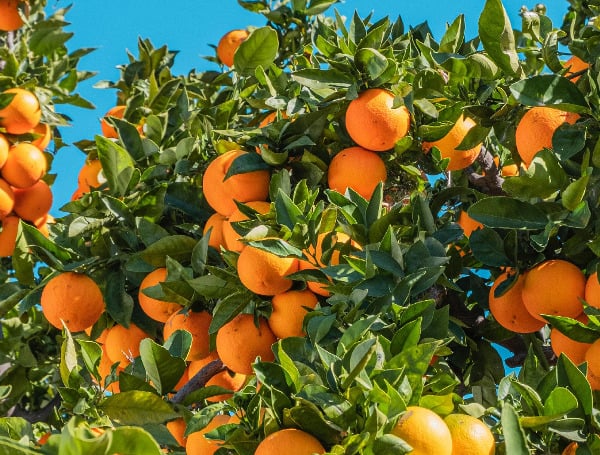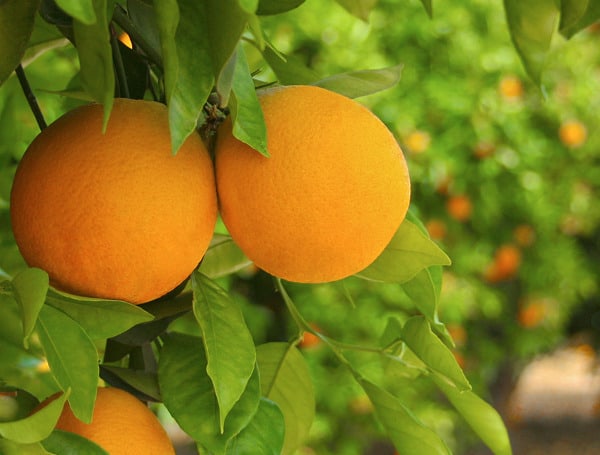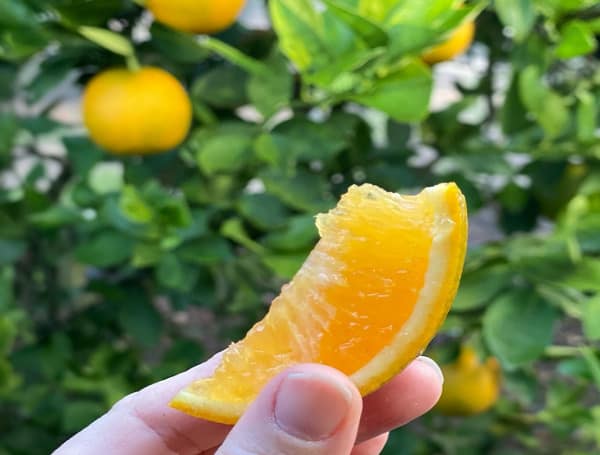Florida’s beleaguered citrus industry received a mixed bag of news this week, with a stable production forecast offering a glimmer of hope amidst the ongoing challenges of hurricane damage and disease.
The U.S. Department of Agriculture released an updated forecast on Friday, maintaining its projections for orange and grapefruit production at 12 million and 1.2 million boxes, respectively. These figures remain unchanged from the December forecast, which was the first projection following the devastating impact of Hurricane Milton in October.
However, the forecast lowered projections for specialty crops, primarily tangerines and tangelos, by about 14%, to 300,000 boxes.
READ: Hurricane Milton Tops 2024’s Insured Loss Chart, Despite Helene’s Higher Damage
Despite the challenges, Matt Joyner, executive vice president and CEO of Florida Citrus Mutual, found a silver lining in the stable projections. “I anticipated that we might see another slight downward trend,” Joyner said. “It’s not a lot better, but holding steady is a victory right now.”
The forecast comes on the heels of a major blow to the industry, with Alico Inc., a prominent Fort Myers-based grower, announcing its exit from the citrus business. This decision, attributed to “changing environmental and economic realities,” will remove an estimated 12% of Florida’s citrus acreage.
The Florida citrus industry has been grappling with a multitude of challenges in recent years, including:
- Hurricanes: Hurricanes Ian in 2022 and Milton in 2024 caused significant damage to groves and infrastructure.
- Citrus Greening: This deadly disease has ravaged citrus crops, leading to a dramatic decline in production.
- Development: Residential and commercial development continues to encroach on citrus lands, reducing available acreage for cultivation.
READ: Florida Senate Defends Redistricting Plan Against Racial Gerrymandering Claims
Amidst these challenges, a glimmer of hope emerged this week with the announcement from the University of Florida that scientists are testing a new type of citrus tree resistant to the Asian citrus psyllid, the insect that transmits citrus greening. This breakthrough could potentially revolutionize the industry and help restore Florida’s citrus production.
Despite the positive development, the road to recovery for the Florida citrus industry remains long and arduous. The current projected harvest is the lowest since the 1918-1919 season, a stark reminder of the challenges facing this once-thriving industry.
Florida Citrus: A Legacy of Sunshine and Struggles
The story of Florida is inextricably linked to the citrus fruit that has shaped its identity, economy, and even its nickname – the Sunshine State. But this juicy tale is one of both sweet success and bitter hardship.
For generations, Florida’s citrus industry was a powerhouse, its fragrant groves and abundant harvests painting a picture of prosperity. The nation thirsted for Florida’s oranges and grapefruit, making orange juice a breakfast staple and a symbol of health and vitality.
Citrus wasn’t just a crop; it was a cultural icon, deeply woven into the state’s identity. Images of sun-drenched groves and roadside stands overflowing with fruit became synonymous with Florida’s sunny image.
However, the industry has faced immense challenges in recent decades. Citrus greening disease, spread by tiny insects, has decimated groves, causing production to plummet to historic lows. Hurricanes have dealt further blows, damaging trees and infrastructure.
The impact has been far-reaching:
- Economic losses: The decline in citrus production has cost Florida billions of dollars and countless jobs.
- Cultural impact: The iconic image of Florida citrus has been tarnished, and the once-ubiquitous scent of orange blossoms has faded.
- National impact: The reduced supply of Florida citrus has affected prices and availability nationwide.
Please make a small donation to the Tampa Free Press to help sustain independent journalism. Your contribution enables us to continue delivering high-quality, local, and national news coverage.
Connect with us: Follow the Tampa Free Press on Facebook and Twitter for breaking news and updates.
Sign up: Subscribe to our free newsletter for a curated selection of top stories delivered straight to your inbox.



